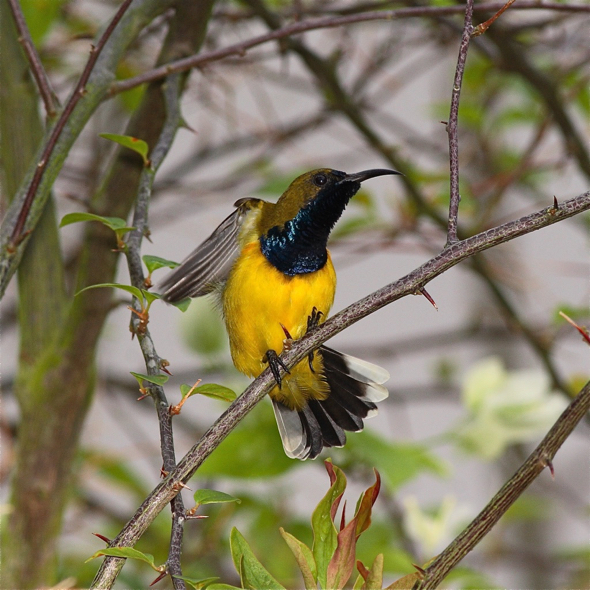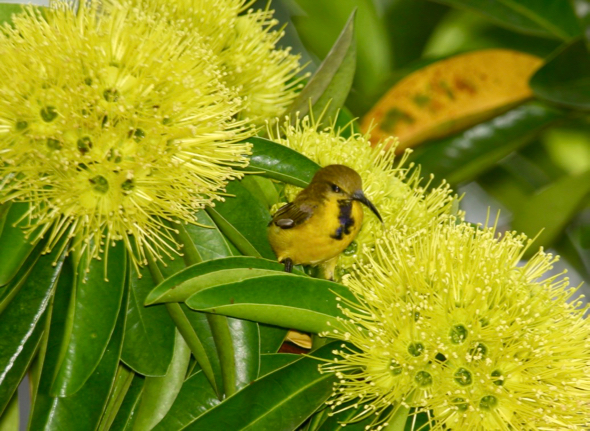
The male Olive-backed Sunbirds (Cinnyris jugularis) is olive-green above with iridescent blue-black forehead, throat and breast (Robson, 2008) (above). The belly and vent is yellow.

The female is olive-green above and plain yellow on the underside (above).

Birdwatchers and bird photographers who use Robson (2008) as their guide will be aware of the male eclipse category. This category refers to the male plumage that has an iridescent blue-black stripe restricted to the centre of the throat and breast (above).
According to Wells (2007), such male eclipse is especially found among the Olive-backed Sunbirds in Singapore. This male eclipse plumage identifies the male as non-breeding. With time, it is assumed that this plumage will moult to the adult male breeding plumage. Cheke & Mann (2008) refer such individuals as non-breeding males.

However, there are cases of female plumage with varying traces of black on the chin and/or breast (above, below). Are these eclipse plumage? Or at best the beginning of eclipse plumage?

If so, then the image below is evidence of cooperative breeding among Olive-backed Sunbirds.

After all, Wells (2007) mentioned: “…the ‘pre-adult’ interpretation seems the more likely, with black chin to breast acquired progressively…” And that ringing may resolve the issue.
YC Wee
Singapore
1st August 2018
Note: I wish to thank Dato’ Dr Amar-Sinngh HSS for useful discussion.
References:
1. Cheke, R. A. & C. F. Mann, 2008. Family Nectariniidae (Sunbirds). In: del Hoyo, J., A. Elliott & D. A. Christie (eds.), Handbook of the birds of the world. Vol. 13. Penduline-tits to Shrikes. Lynx Editions, Barcelona. Pp. 196-320.
2. Robson, C., 2008. A field guide to the birds of South-east Asia. New Holland, London. 544 pp.
3. Wells, D.R., 2007. The birds of the Thai-Malay Peninsular. Vol. II, Passerines. Christopher Helm, London. 800 pp.








